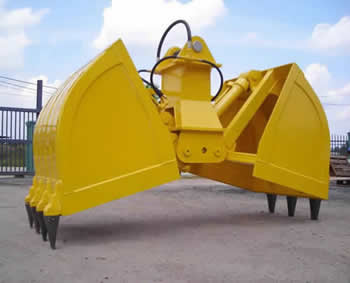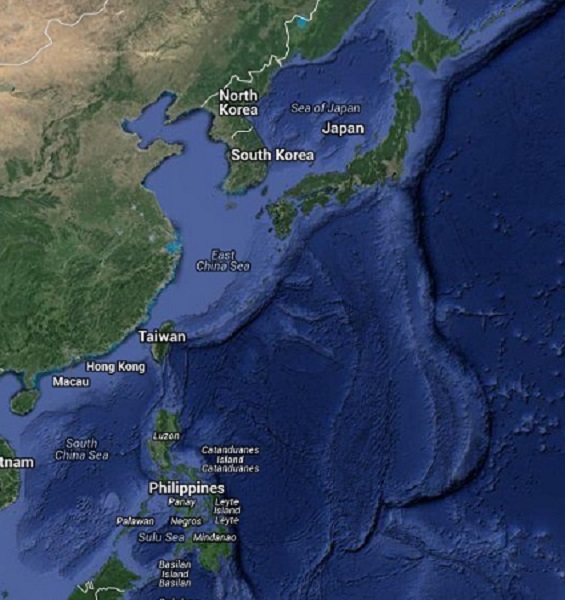Thanks for keeping this thread updated. The last two articles posted by slad and c_d are the most accurate I've read about the situation inside Unit 4 and the dangers posed by its precarious condition.
In other news, the
General Electric-designed reactors in Fukushima have 23 sisters in U.S. General Electric-designed reactors in Fukushima have 23 sisters in U.S.By Bill DedmanInvestigative Reporter, NBC News
The General Electric-designed nuclear reactors involved in the Japanese emergency are very similar to 23 reactors in use in the United States, according to Nuclear Regulatory Commission records.

GE's Mark I containment system.
The
NRC database of nuclear power plants shows that 23 of the 104 nuclear plants in the U.S. are GE boiling-water reactors with GE's Mark I systems for containing radioactivity, the same containment system used by the reactors in trouble at the Fukushima Dai-ichi plant. The U.S. reactors are in Alabama, Georgia, Illinois, Iowa, Massachusetts, Michigan, Minnesota, Nebraska, New Jersey, New York, North Carolina, Pennsylvania and Vermont.
In addition, 12 reactors in the U.S. have the later Mark II or Mark III containment system from GE. These 12 are in Illinois, Louisiana, Mississippi, New York, Ohio, Pennsylvania and Washington state. See the full list below.
(General Electric is a parent company of msnbc.com through GE's 49 percent stake in NBCUniversal. NBCUniversal and Microsoft are equal partners in msnbc.com.)
Msnbc.com sent questions Saturday to GE, asking whether the Japanese reactors differed from those of the same general design used in the U.S.
A GE spokesman, Michael Tetuan, referred all questions to the Nuclear Energy Institute, an industry trade and lobbying group. Tetuan said GE nuclear staff members in Wilmington, N.C., are focused on assisting GE employees in Japan and standing by to help the Japanese authorities if asked to help. The NEI on Sunday confirmed that the figure of 23 is correct.
Updates: * On Monday, GE Hitachi Nuclear sent the following statement, in full: "The BWR Mark 1 reactor is the industry’s workhorse with a proven track record of safety and reliability for more than 40 years. Today, there are 32 BWR Mark 1 reactors operating as designed worldwide. There has never been a breach of a Mark 1 containment system."
* On Friday,
GE posted rebuttals to the most common criticisms of the Mark I containment system.
The six reactors at the Fukushima Dai-ichi power plant, which had explosions on Saturday and Monday, are all GE-designed boiling-water reactors, known in the industry as BWRs. Five have containment systems of GE's Mark I design, and the sixth is of the Mark II type. They were placed in operation between 1971 and 1979.
A
fact sheet from the anti-nuclear advocacy group
Nuclear Information and Resource Service contends that the Mark I design has design problems, and that in 1972 an Atomic Energy Commission member, Dr. Stephen Hanuaer, recommended that this type of system be discontinued.
"Some modifications have been made to U.S. Mark I reactors since 1986, although the fundamental design deficiencies remain," NIRS said. The group has a
commentary online describing what it says are hazards of boiling-water reactors: human invervention needed to vent radioactive steam in the case of a core meltdown, and problems with aging.
Since the earthquake struck Japan on Friday, the
early statements by the industry's Nuclear Industry Institute have emphasized that only six plants in the U.S. have precisely the same generation of reactor design (GE boiling-water reactor model 3) as the first reactor to have trouble in Fukushima Daiichi. Problems then developed at different reactors of GE model 4.
But aside from the generation of reactor design,
the following 23 U.S. plants have GE boiling-water reactors (GE models 2, 3 or 4) with the same Mark I containment design used at Fukushima, according to the
NRC's online database:
• Browns Ferry 1, Athens, Alabama, operating license since 1973, reactor type GE 4.
• Browns Ferry 2, Athens, Alabama, 1974, GE 4.
• Browns Ferry 3, Athens, Alabama, 1976, GE 4.
• Brunswick 1, Southport, North Carolina, 1976, GE 4.
• Brunswick 2, Southport, North Carolina, 1974, GE 4.
• Cooper, Brownville, Nebraska, 1974, GE 4.
• Dresden 2, Morris, Illinois, 1970, GE 3.
• Dresden 3, Morris, Illinois, 1971, GE 3.
• Duane Arnold, Palo, Iowa, 1974, GE 4.
• Fermi 2, Monroe, Michigan, 1985, GE 4.
• FitzPatrick, Scriba, New York, 1974, GE 4.
• Hatch 1, Baxley, Georgia, 1974, GE 4.
• Hatch 2, Baxley, Georgia, 1978, GE 4.
• Hope Creek, Hancock's Bridge, New Jersey, 1986, GE 4.
• Monticello, Monticello, Minnesota, 1970, GE 3.
• Nine Mile Point 1, Scriba, New York, 1969, GE 2.
• Oyster Creek, Forked River, New Jersey, 1969, GE 2.
• Peach Bottom 2, Delta, Pennsylvania, 1973, GE 4.
• Peach Bottom 3, Delta, Pennsylvania, 1974, GE 4.
• Pilgrim, Plymouth, Massachusetts, 1972, GE 3.
• Quad Cities 1, Cordova, Illinois, 1972, GE 3.
• Quad Cities 2, Moline, Illinois, 1972, GE 3.
• Vermont Yankee, Vernon, Vermont, 1972, GE 4.
And these 12 newer GE boiling-water reactors have a Mark II or Mark III design: • Clinton, Clinton, Illinois, 1987, GE 6, Mark III.
• Columbia Generating Station, Richland, Washington, 1984, GE 5, Mark II.
• Grand Gulf, Port Gibson, Mississippi, 1984, GE 6, Mark III.
• LaSalle 1, Marseilles, Illinois, 1982, GE 5, Mark II.
• LaSalle 2, Marseilles, Illinois, 1983, GE 5, Mark II.
• Limerick 1, Limerick, Pennsylvania, 1985, GE 4, Mark II.
• Limerick 2, Limerick, Pennsylvania, 1989, GE 4, Mark II.
• Nine Mile Point 2, Scriba, New York, 1987, GE 5, Mark II.
• Perry, Perry, Ohio, 1986, GE 6, Mark III.
• River Bend, St. Francisville, Louisiana, 1985, GE 6, Mark III.
• Susquehanna 1, Salem Township, Pennsylvania, 1982, GE 4, Mark II.
• Susquehanna 2, Salem Township, Pennsylvania, 1984, GE 4, Mark II.
Other resources:Details on each U.S. reactor are in the
NRC list.
The NRC has an
explainer on boiling-water reactors and the various GE containment designs.
Here's an earthquake hazard map of the lower 48 United States from the U.S. Geological Survey showing the areas with the greatest risks.
More detailed state-by-state maps from the USGS are here.
Scientific American looks at the technical situation facing the engineers in Japan. And
The Wall Street Journal describes how this emergency calls into question the redundancies that nuclear plant designers rely on.
The
Wall Street Journal reported that Tokyo Electric tested the Fukushima plant to withstand an earthquake less severe than the one that struck last week:
Separately, company documents show that Tokyo Electric tested the Fukushima plant to withstand a maximum seismic jolt lower than Friday's 8.9 earthquake. Tepco's last safety test of nuclear power plant Number 1—one that is currently in danger of meltdown—was done at a seismic magnitude the company considered the highest possible, but in fact turned out to be lower than Friday's quake. The information comes from the company's "Fukushima No. 1 and No. 2 Updated Safety Measures" documents written in Japanese in 2010 and 2009. The documents were reviewed by Dow Jones.
The company said in the documents that 7.9 was the highest magnitude for which they tested the safety for their No. 1 and No. 2 nuclear power plants in Fukushima.
Simultaneous seismic activity along the three tectonic plates in the sea east of the plants—the epicenter of Friday's quake—wouldn't surpass 7.9, according to the company's presentation.
The company based its models partly on previous seismic activity in the area, including a 7.0 earthquake in May 1938 and two simultaneous earthquakes of 7.3 and 7.5 on November 5 of the same year.









